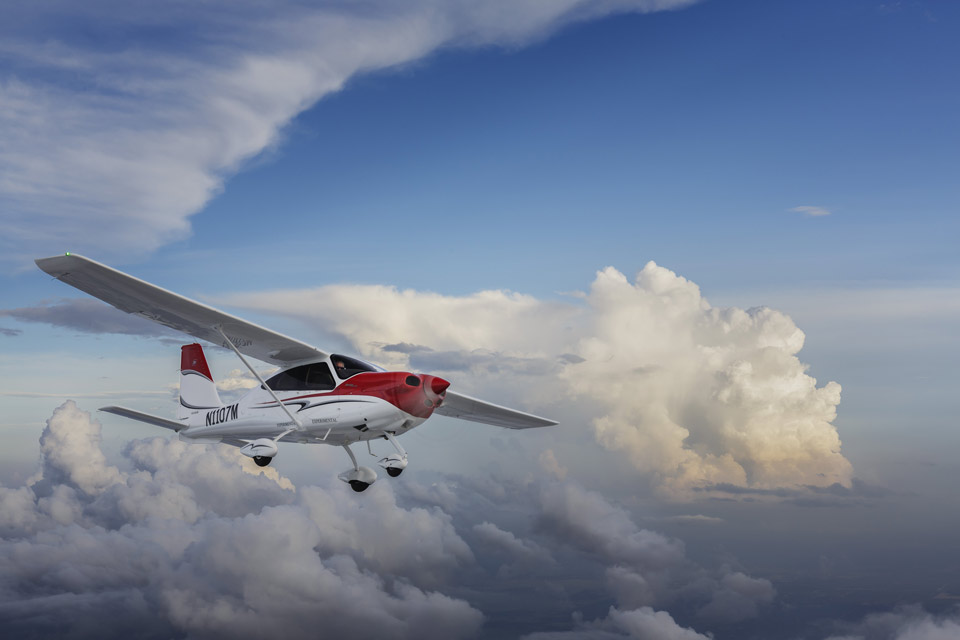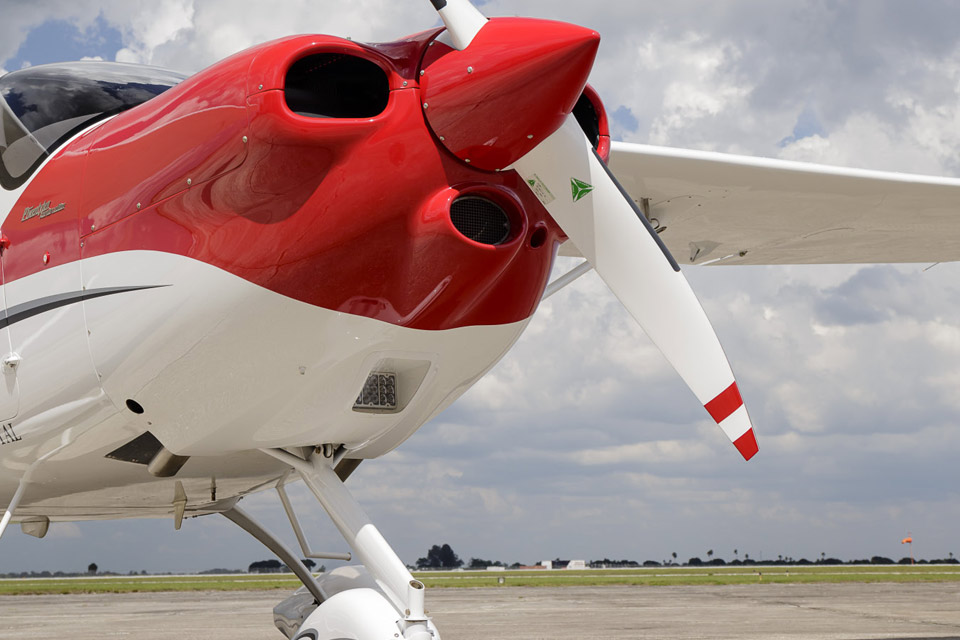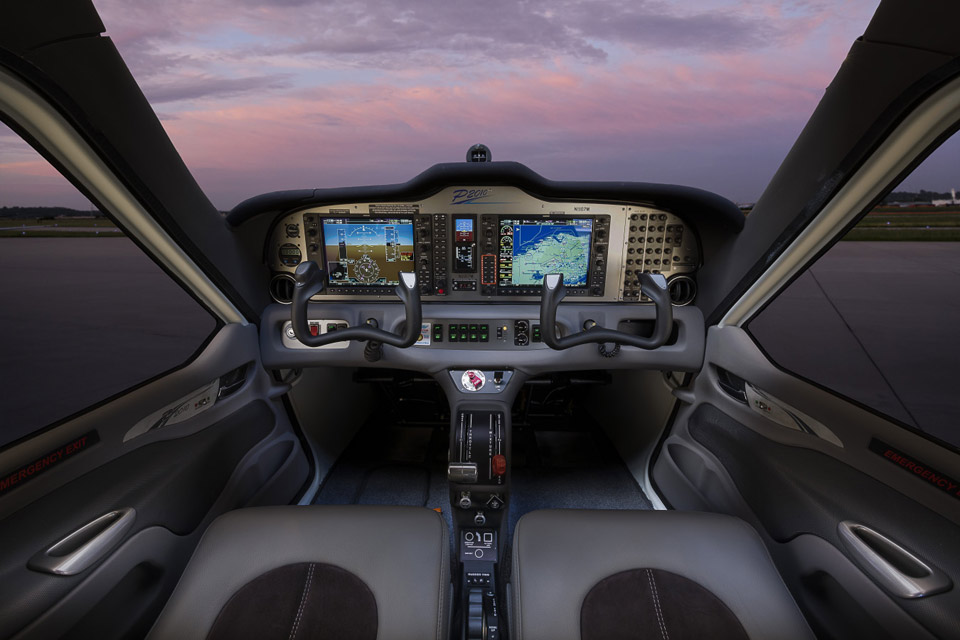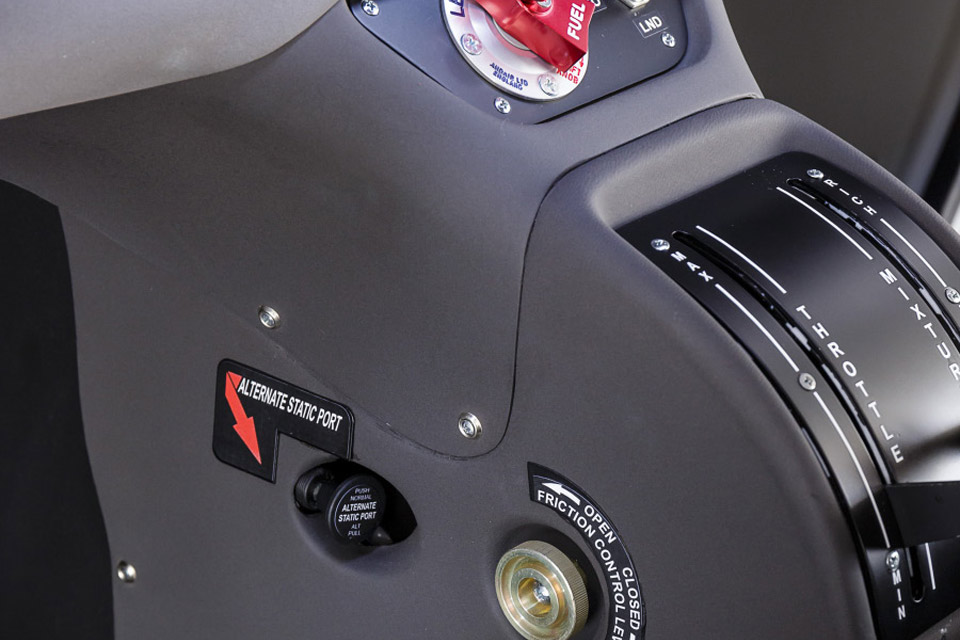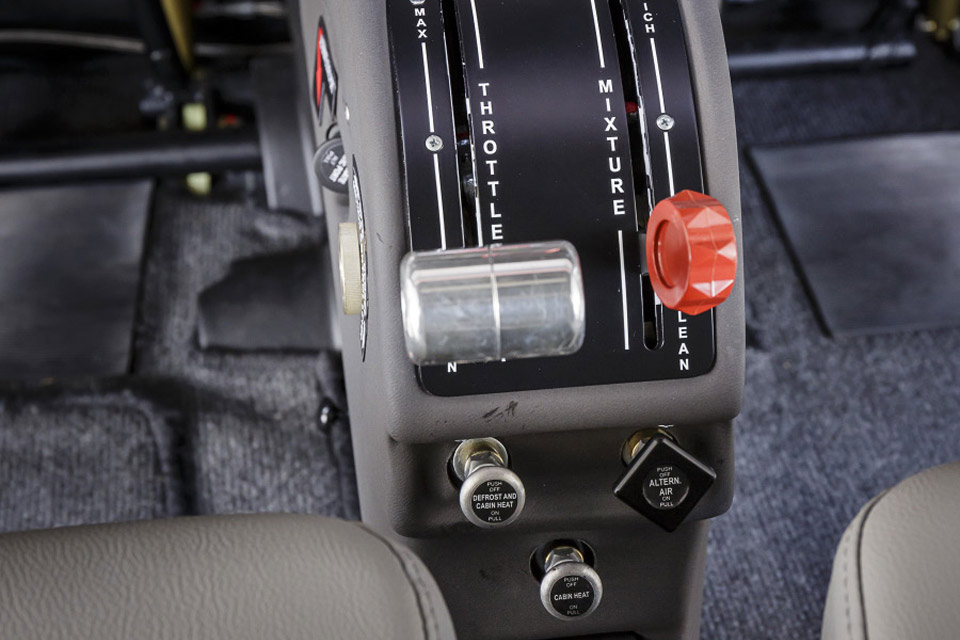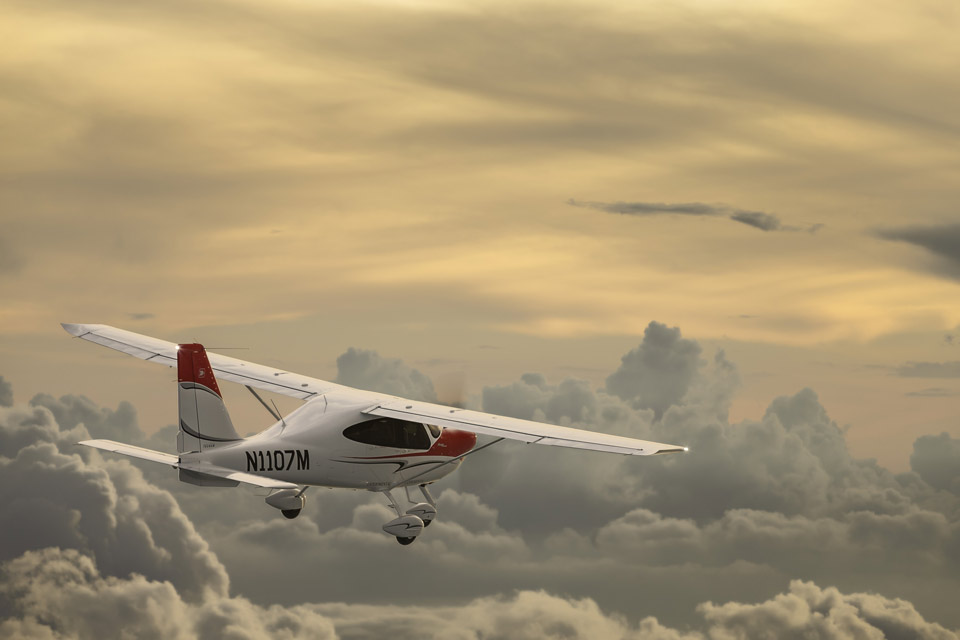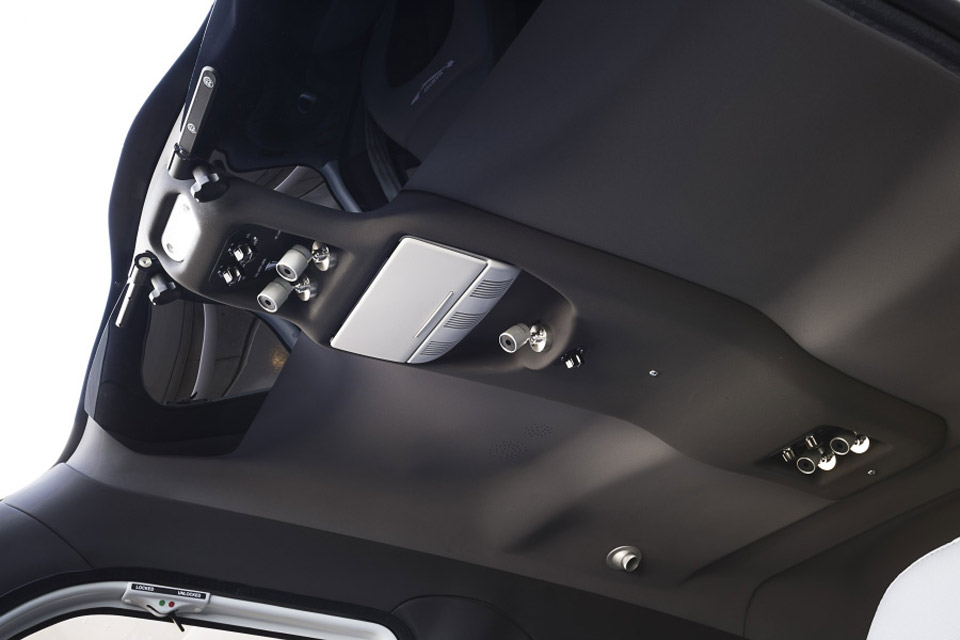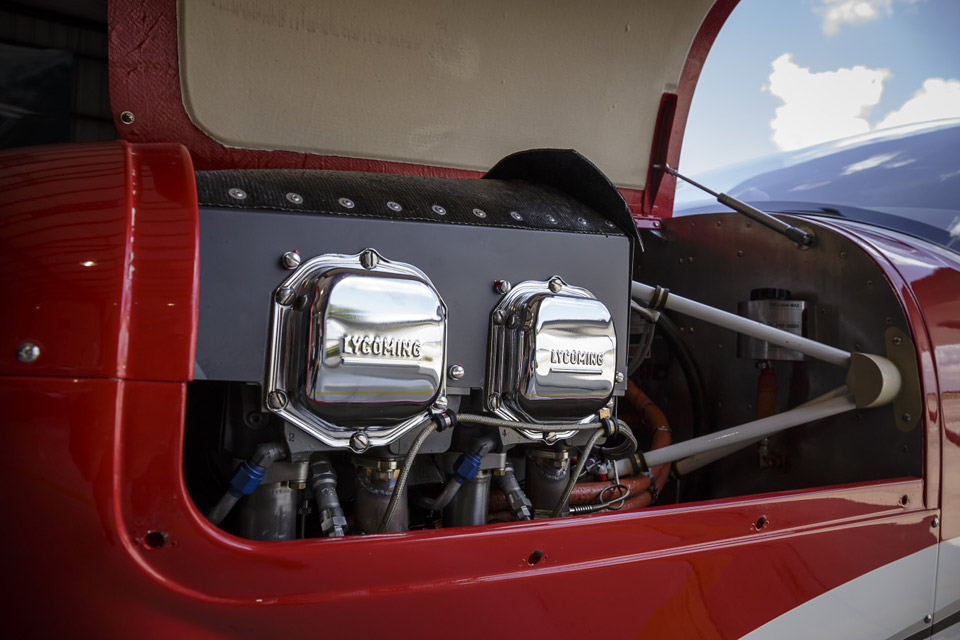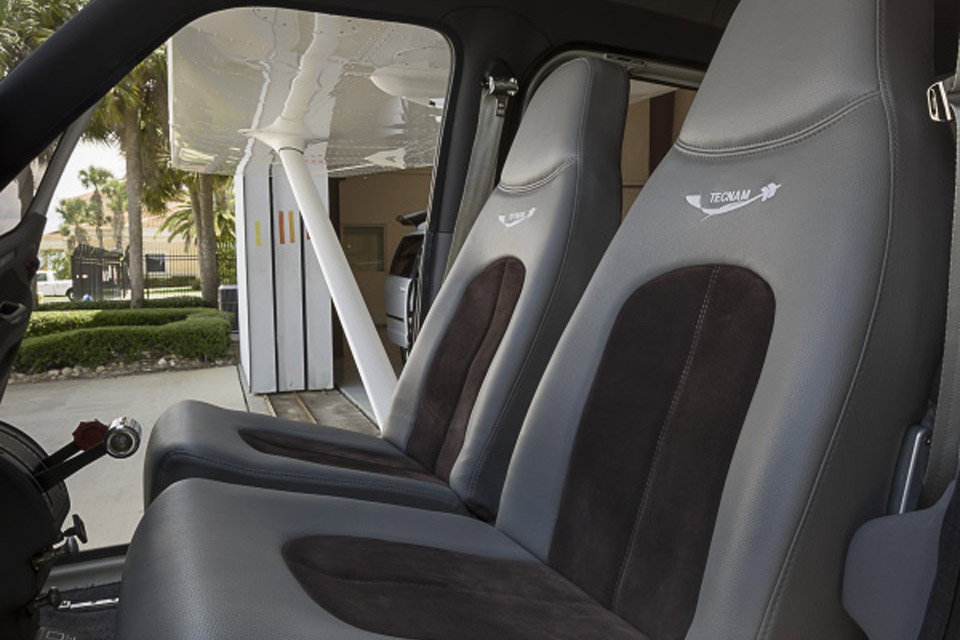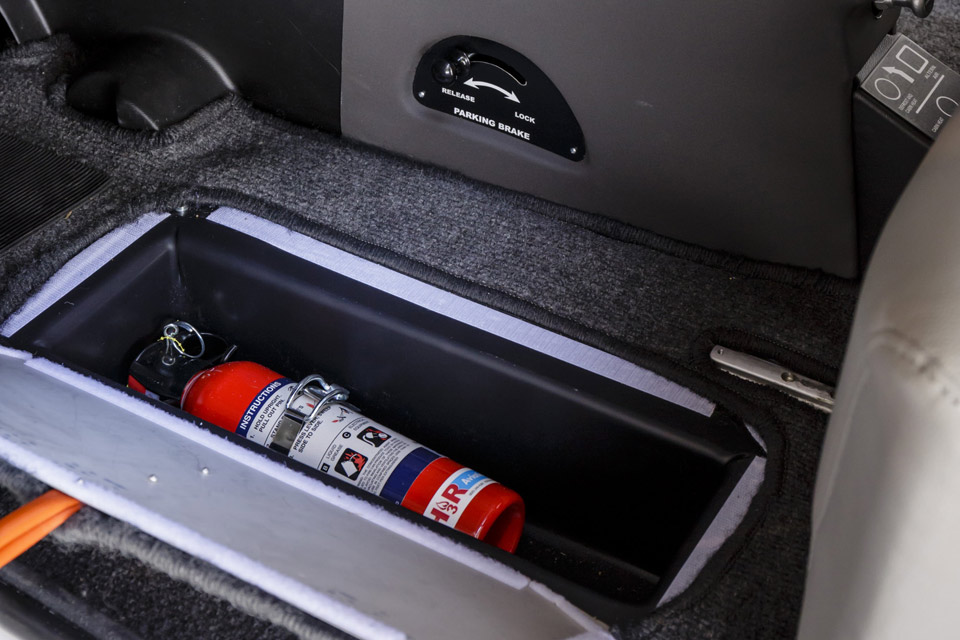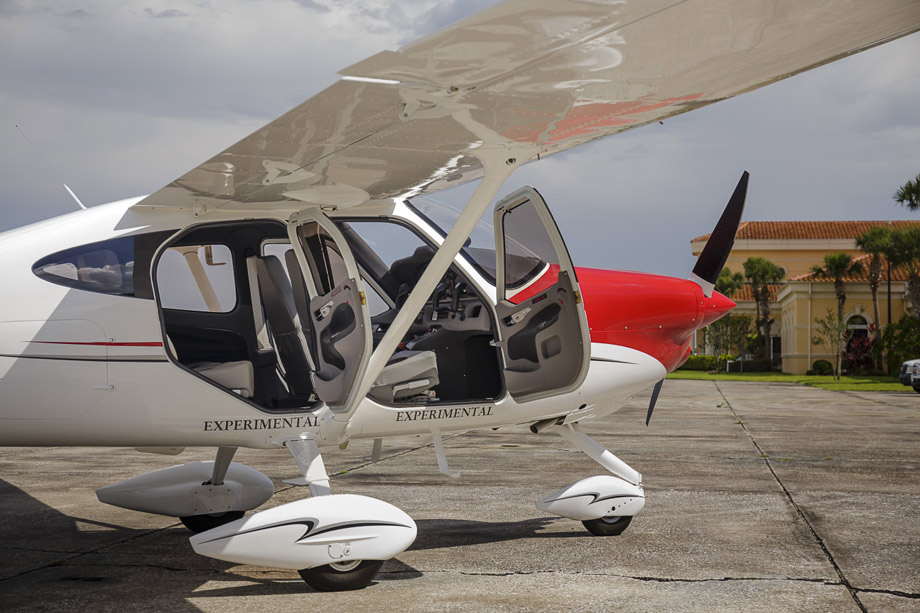Cessna workers, Tecnam appears to be aiming at your single-engine market. The Italian firm’s four-seat, soon-to-be FAA-certified P2010 (referring to the year of its design) may lead to as-yet-unannounced models, but officials won’t confirm that. There are strong clues.
The engine compartment is larger than needed for the 180-horsepower Lycoming it houses. The fuel tanks supply 61 gallons, enough to feed a much larger engine for four hours.
Literally just off the boat, the Italian challenger blends a carbon fiber fuselage with an all-metal wing, rudder, and stabilator, and offers specifications similar to those of the Cessna 172. The standard useful load of the P2010 is 992 pounds, better than the standard Cessna 172 useful load of 918 pounds. (The actual useful load of the P2010 flown at Tecnam’s United States headquarters in Sebring, Florida, is 910 pounds.) The 2015 price of $345,000—a recent reduction from $369,000—bests the 2015 base price for the 172S of $364,000.
The P2010 is sold in the United States only with the Garmin G1000 cockpit, while in Europe it is offered with a Garmin G500 glass cockpit or with analog instruments. Speed is no contest. It promises a cruise speed of 140 knots true airspeed and flew at 133 knots on an AOPA test flight at 3,000 feet (fuel flow was 12.1 gallons per hour), intentionally using a lower power setting of 2,600 rpm as a customer might; Cessna claims a cruise speed of 124 knots true airspeed for the Skyhawk. The engine can be run continuously at 2,700 rpm, and Tecnam factory representative Shannon Yeager estimated that would have provided four additional knots.
And there’s one feature the Skyhawk does not have—a back door for passengers.
In case you have never heard of Tecnam, it has 3,500 airplanes flying worldwide—30 of them P2010 models flying in Europe, where certification is approved. Tecnam is best known in the United States for its Light Sport models, but it has five fully certified models in Europe and now two in the United States—and the company additionally makes airliner parts on the side. It offers a twin-engine P2006 and is working on a P2012 regional airliner.
The castering nosewheel compares well to an aircraft with a direct link from the rudder pedals to the nosewheel. The rudder begins to aid in turning at about 10 knots while differential braking is used at slower speeds. It has a ridiculously tight turn radius given that the nosewheel can swing 90 degrees. That enjoyable trait had me spinning in circles for no reason aside from the fact the video camera that was rolling. Potted ferns just inside the Tecnam showroom hangar were twice blown over by a tightly pivoting P2010 just outside. (One of those times, I was the guilty pilot.)
The PTwentyten, as the company calls it—a name written in a metal nameplate on the nose—takes its sweet time getting off the runway. Given the current engine, the aircraft gives the impression of being underpowered during takeoff, eating up 1,200 feet. Yeager suggested that the aircraft be held on the runway until a speed of 60 knots indicated is reached: flaps-up stall speed is 59 but a takeoff flap setting of 20 degrees is used, dropping the stall speed to 53 knots indicated. It was obvious the airplane wanted to fly prior to 60 but I pushed forward on the yoke to prevent an early liftoff. The takeoff run, according to my video camera, lasted 20 seconds. I once timed the takeoff run of a Beechcraft Bonanza A36 at 17 seconds.
Then it gets up and goes. Once in the air and in a shallow climb, Yeager suggested accelerating to 72 knots before retracting flaps and then building airspeed to 82 knots indicated—the best rate of climb speed. It climbed at a healthy 650 to 700 feet per minute with flaps retracted while carrying two people and 45 gallons of fuel. While practicing landings in the traffic pattern I later saw 850 to 900 feet per minute.
The cabin temperature was comfortable at 3,000 feet in the 10 a.m. late-May Florida heat, thanks to large air vents in front and passenger vents in back that could be aimed toward the pilot and co-pilot.
Aerodynamic stalls were performed both with power at idle and at takeoff power settings, and neither was a major event. A video of the flight shows no airframe shuddering or wingtip drop. In the approach-to-landing stall performed at 3,000 feet, the altitude loss was only 150 feet. The P2010 is a big, stable, speedy truck with no bad habits.
Turning is a little bit like a Maule airplane in that you lead with the rudder and follow with the ailerons. It takes about three hours to get used to this different technique for turning. Speaking of rudder, the aircraft requires left rudder to maintain coordinated flight in excess of 120 knots indicated airspeed but has an electric rudder trim switch to reduce pilot workload.
I returned to the Sebring airport in a 144-knot descent, slowing to 90 knots on the downwind leg of the traffic pattern, using a power setting of 2,000 rpm as Yeager suggested. I slowed to 80 on the base leg with the three-position electric flap switch at the takeoff position, and 70 knots with flaps at 35 degrees and power at 1,500 rpm on final approach to the runway. The P2010 tends to land flat, so the pilot must focus on raising the nose to a three-degree nose-up attitude for touchdown. As it turned out, that wasn’t difficult to do, and all my landings were with the nosewheel off the runway. The final landing was a simulated engine-out approach with power reduced to idle. Yeager suggested a glide speed of 82 to 84 knots indicated airspeed. Coming in too high, I added full flaps but remained high. Yeager said I could do a forward slip in any flap configuration, and the aircraft remained stable while in the forward slip with the left wing down and the right rudder pedal pushed all the way to the floor. I floated slightly past the intended point of touchdown.
Once clear of the runway I released the top lock of the door, released the latch, and opened the door slightly for taxi, the preferred air conditioning system for Florida.
The aircraft has proven popular in Europe, with nearly 30 in customers’ hands. Should you buy now or wait until all those little secrets have happened, like the rumored bigger engine? As it stands, the aircraft is positioned between the Cessna 172 and Cessna 182. Since it costs less than a 172, has nearly all the speed of a 182, and a cabin that is eight inches wider than the 182, here’s betting early customers will opt for the P2010 as is.
SPEC SHEET
Tecnam P2010
Base price: $345,000
Price as tested: $353,000
Specifications
Powerplant | 180 hp Lycoming IO-360-M1A
Recommended TBO 2,000 hr
Propeller | 2 blade 74 in dia MT 188R 145-4G
Length | 25 ft 11 in
Height | 8 ft 10 in
Wingspan | 33 ft 10 in
Wing area | 149 sq ft
Wing loading | 17.1 lb/sq ft
Power loading | 14.2 lb/hp
Seats | 4
Cabin length | 5 ft 11 in
Cabin width | 3 ft 8 in
Cabin height | 3 ft
Empty weight | 1,565 lb
Empty weight, as tested | 1,647 lb
Max gross weight | 2,557 lb
Useful load | 992 lb
Useful load, as tested | 910 lb
Payload w/full fuel | 626 lbPayload w/full fuel, as tested | 544 lb
Max takeoff weight | 2,557 lb
Max landing weight | 2,557 lb
Fuel capacity | 63.4 gal (61 gal usable) 380.4 lb (366 lb usable)
Baggage capacity | 176 lb, 18 cu ft
Performance
Takeoff distance, ground roll | 804 ft
Takeoff distance over 50-ft obstacle | 1,260 ft
Max demonstrated crosswind component | 12 kt
Rate of climb, sea level | 850 fpm
Max level speed | 140 kt
Cruise speed/endurance w/45-min rsv, (fuel consumption) @ 75% power, best economy | 128 kt/4 hr
6,500 ft (76 pph/12.7 gph)
Max operating altitude | 12,000 ft
Service ceiling | 15,000 ft
Landing distance over 50-ft obstacle | 1,027 ft
Landing distance, ground roll | 656 ft
Limiting and recommended airspeeds
VX (best angle of climb) | 76 KIA
VY (best rate of climb) | 82 KIAS
VA (design maneuvering) | 119 KIAS
VFE (max flap extended) | 92 KIAS
VNO (max structural cruising) | 130 KIAS
VNE (never exceed) | 164 KIAS
VR (rotation) | 60 KIAS
VS1 (stall, clean) | 59 KIAS
VSO (stall, in landing configuration) | 50 KIAS
For more information
Contact Tecnam US Inc., 6 Alan Jay Way, Suite 1, Sebring, Florida 33870, 863-655-2400; www.tecnam.com; email [email protected].
All specifications are based on manufacturer’s calculations. All performance figures are based on standard day, standard atmosphere, sea level, gross weight conditions unless otherwise noted.
Extra
A huge fuel capacity of 61 gallons usable fuel indicates not only that you can stay in the air for a long time, but that a bigger engine is yet to come in a future model.
It’s all in the details
What’s not to like
Max demonstrated crosswind is 12 knots.
What it does best
Cruises at 133 knots true airspeed with typical owner power setting.
Neat features
• Fuel tanks are behind main spar for protection during a crash.
• All lights are LEDs.
• Map lights in the ceiling can be individually aimed.
• Wheel pants are high enough to operate on grass.
Why the P2010 is designed for grass
In Europe there are fees for using paved-runway airports, so pilots prefer grass runways to avoid high fees. That’s why the wheelpants expose a large amount of the tire.
About those vortex generators
Spin resistance carbon fiber fuselages provide little of the drag needed to help stop a spin, so the P2010 has a strake on the bottom of the tail and vortex generators on the vertical stabilizer as part of the spin resistance design. You can’t fly if more than three vortex generators in a row are missing from the vertical stabilizer.

